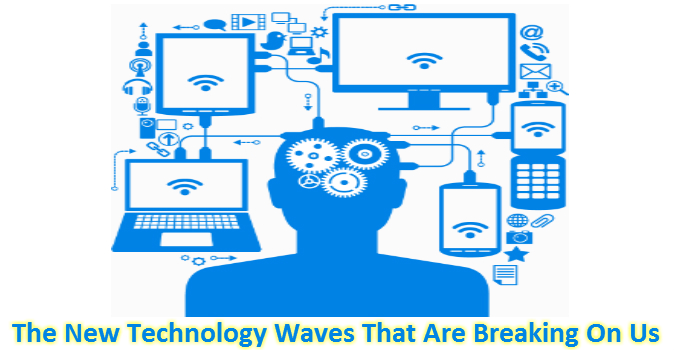The New Technology Waves That Are Breaking On Us

In recent months I have written articles about the four technology waves already crashing over us: mobility, cloud computing Services, social business and big data. Each has a high disruptive power and the four together are a real tsunami. In fact, we cannot look at them in isolation. This power has dramatic transformation in what is known as IT impacts, besides causing massive transformations in virtually all industries.
Given this scenario, we react in two ways: deny (or try to minimize them), or exploit for competitive advantage, creating new products, services and businesses.
Underlying this shift to cloud computing appears. The scenario of cloud computing that transforms the relations between users and data center service providers and IT products, shaking the IT industry as we know it today. This forces us to think about IT differently. The well-known analogy of glass half full or half empty shows this new way of thinking. That’s how we think of the traditional way to acquire and use IT. The medium is the limit and we under-utilizes it or have a demand beyond its capacity. Cloud, the answer is different: the glass is of wrong size. This means that we can always have a cup of right size for our demands.
This new way of thinking technology significantly impacts the economics of IT. For example, when we launch a new business or a new service, we face the challenge of assessing its potential value versus the potential risk. Suppose that this business is an online store for electronic commerce. Before you start operating, you have to prepare all the rearguard, the supply chain, distribution center, website, software management, etc..
All this implies investment and as a result the business is not 100% guaranteed, involves risk. The investment decision is how much risk you accept before your business handles the return on this investment. In the current model of technology acquisition is necessary first (upfront investment) to acquire all the paraphernalia of servers and software before beginning the operation. And already planning the setup with an expected charge for a fairly large volume of transactions. After all, you expect to succeed and know you cannot increase the setting from one day to the other … But if we think differently, using the cloud model, is there no upfront investment? The initial investment is just enough to show that the model works. As sales increase, the capacity is increased. The scale of infrastructure technology is synchronized in direct proportion to the success of the venture. This significantly lowered the barriers to entry and allows us to create new business and launch new products with much less investment in technology. It’s pay-as-you-go model.
An interesting example is Pinterest. Spent twenty terabytes of data stored to 350 in just seven months, using a cloud. In the traditional model of purchasing physical dedicated servers hosting and storage would be absolutely impractical to achieve this expansion in a timely manner. In the on-premise model, the glass half full or half empty is always the wrong size …
Cloud computing is the “glue” that joins all other technology waves. It facilitates the creation of collaborative models, it is the point of union of information and processing. Extending the functionality of mobile devices that can share their specific features like accelerometer and GPS (geolocation) with the immense database that can be analyzed in the rear in clouds, creating new types of systems, such as systems of engagement. In fact, cloud opens up the prospect of thinking differently in the way we use and acquire technology and therefore provides opportunities to transform whole sectors of business.
Resources:
- How Cloud Computing Is Changing The Labor Market - March 25, 2015
- Adopting Infrastructure as a Service Can be a Good Deal - March 17, 2015
- Will Virtualize? Take These Six Points Into Consideration - March 12, 2015
Beautiful and useful topics concerned with modern technology continue to have such fine threads this topic